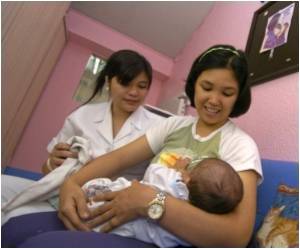Infants’ health may be influenced by the type of environment that in turn may exert an effect on breast milk.

‘Composition of sugar molecules in breastmilk may be impacted by the green environments in residential areas.
’





The oligosaccharides in breast milk can protect the infant from harmful microbes and reduce the risk of developing allergies and diseases. The oligosaccharides are also closely connected to the immune system and gut microbiota which also have an impact on the infant’s health. “Earlier studies have shown that genetic and biological factors, such as mother’s obesity, can change the oligosaccharide composition in breastmilk. Our aim was to study how green living environments affect the composition of oligosaccharides in breastmilk, as greener environments have been found to have a beneficial impact on immunity and reduce the risk of disease in children,” says Adjunct Professor Mirkka Lahdenperä from the Department of Biology at the University of Turku.
Closer Connection to Nature may affect Child's Health via Breastmilk Approximately 800 mothers participated in the longitudinal follow-up study, the STEPS Study, that started at the University of Turku in 2007. The breastmilk samples were collected when the infants were three months old, after which the oligosaccharide composition was analyzed at the Bode Lab at the University of California San Diego.
The residential green environments were measured at the time the child was born around the homes of the families with measures of greenness, diversity of vegetation, and naturalness index, i.e. how much human impact and intervention there has been in the residential area.
The results were independent of the education level, occupation, marital status, and health of the children’s parents as well as the socio-economic disadvantage in the residential area.
Advertisement
“This could indicate that increased everyday contacts with nature could be beneficial for breastfeeding mothers and their children as the oligosaccharide composition of breastmilk would become more diverse. The results imply that breastfeeding could have a mediating role between residential green environments and health in infancy,” says Lahdenperä and continues:
Advertisement
Source-Eurekalert














